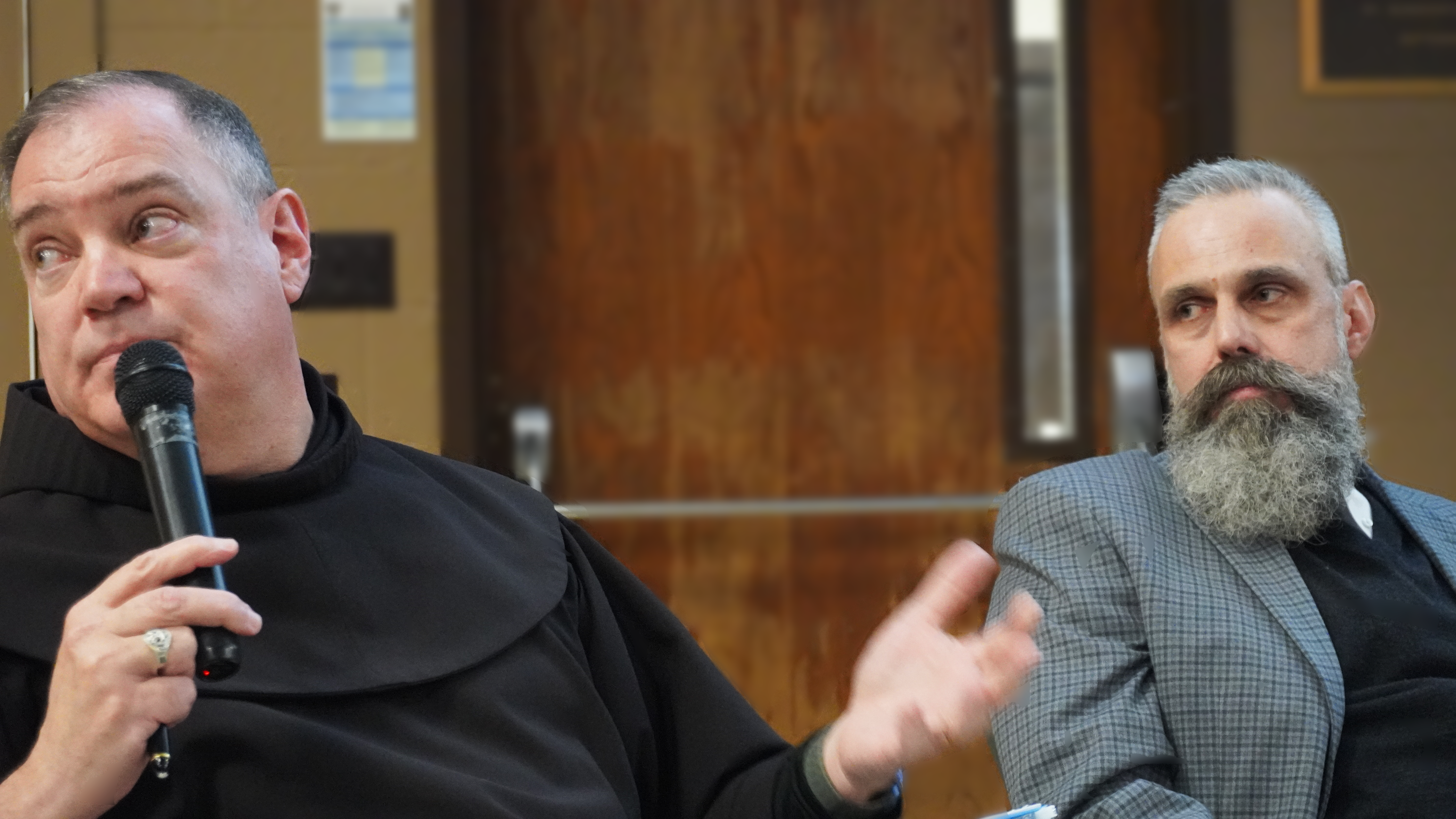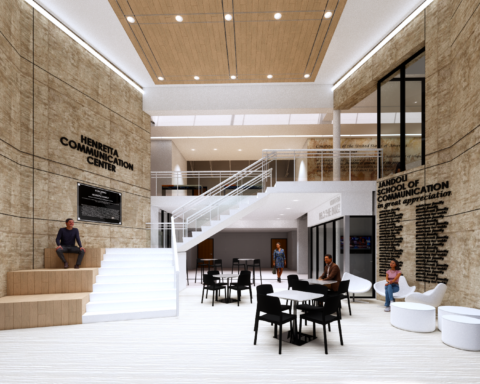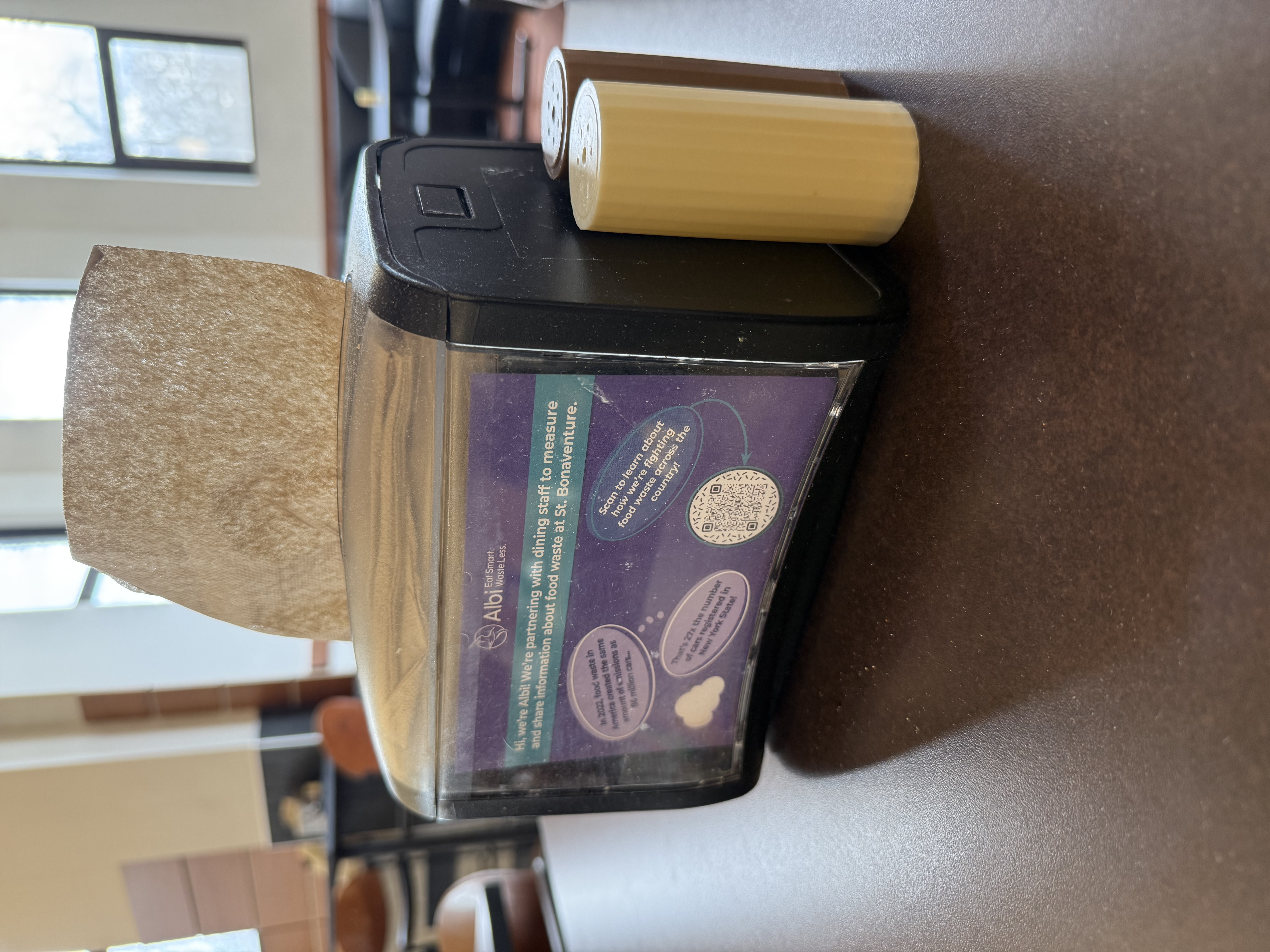By Julia Mericle
Managing Editor
May Shogan is an American success story.
That is how Guy Imhoff, Ph.D, introduced Shogan, the speaker at Tuesday’s #RaceMatters lecture, titled “Starting a New Life: The Refugee and Immigrant Experience.”
Shogan, the director of the International Exchanges and Education Department with the International Institute of Buffalo, came to the United States 28 years ago from Jordan. Since then, she has devoted herself to helping others make the journey to the U.S. for a better life, said Imhoff, interim dean of Clare College.
Shogan began her discussion by clarifying the difference between refugees and immigrants.
“Refugees are people who are forced to leave their country, because they are afraid of being tortured or killed or persecuted for political affiliation, religious affiliation, race, gender sometimes,” Shogan said. “And they leave their country looking for a life.”
Refugees go to another country where they apply for refugee status and wait for approval before arriving at their final destination, said Shogan.
“Immigrants, on the other hand, they are people who come here for a better life, for education or to join family members,” said Shogan. “And they are not in danger.”
People become immigrants by family reunification sponsored by a family member, labor certification process or diversity visa. People become refugees by fleeing, seeking legal refugee status and seeking resettlement, Shogan said.
Refugees experience stresses pre-flight including imprisonment, loss of family members or homes and famine. During flight, they experience stress due to rape or physical assault, witnessing crimes, injury or illness and the fear of being forgotten, according to Shogan.
She explained the long process of applying to be accepted as a refugee, which includes undergoing multiple interviews, health screenings and orientation. The discussion also covered the services and benefits provided to refugees, including eight months of refugee cash and medical assistance, as well as initial housing and English language classes.
Shogan said stresses experienced by refugees after arrival in the United States include low economic and social status, language barriers, discrimination and value conflicts.
“There is a lot of talk now about immigrants and refugees,” Shogan said. “And for many people they feel that immigrants contribute to the economy, but refugees are a burden.”
Shogan illustrated the irrationality of this claim by showing the audience a photo collage of immigrants and refugees and asking if they could see any difference. She challenged audience members to consider their own families.
“If the reason for leaving the country for your great grandparents was to flee because of being afraid of being persecuted they might have been called refugees under today’s definition,” Shogan said. “So, basically we are all the same, because we are either second, first, third, tenth generation. We all came from different countries on a different boat or mean of transportation, but we are all here.”
Shogan said she and her coworkers always say people should “replace fear of the unknown with curiosity and facts.”
“If we are afraid just because there is somebody who is different who is coming to town and we don’t know what to expect, and we are afraid that they might be the bad people…that fear is going to cripple us,” said Shogan.
More U.S. citizens are curious to ask questions and learn about the population.
In 2015, 75,000 refugees were approved to enter into the United States. This year the number is expected to rise anywhere from 85,000 to 100,000, said Shogan.
The majority of refugees that settle in western New York come from Iraq, Myanmar and Bhutan, she said.
Shogan said her institution has received a lot of attention regarding the U.S. expecting Syrian refugees. However, she said that there have only been a few Syrian families to come through her organization. Since the process takes a long time, it might be a while before they begin to come to the United States, she said.
“What is ironic about this group is that when that child was found on the beach in Turkey, everybody was calling us asking, ‘How can we help Syrian refugees, we want to be involved’,” Shogan said.
The Syrian child found washed up on shore had died while his family attempted to flee to Canada.
Shogan said her institution did not know of any Syrian refugees who were coming, so she encouraged the callers to help other refugees.
“Then the events in Europe happened, and then nobody wanted to deal with the Syrian refugees or any refugees and we started to hear the negative things,” Shogan said. “So, the advocacy is big now because of the climate we are living in.”
According to Shogan’s presentation, the U.S. immigration population doubled to over 40 million from 1990 to 2010. She said that number is growing, and those who do not accept immigration have to learn to deal with it as a reality and find ways to work effectively together.
“We have to turn differences into learning experiences and start with similarities, because we have a lot to share,” Shogan said. “And just like you are afraid to work with someone who is different from you, they are in the same boat. So, two-way communication is key to solving this issue.”
mericlje13@bonaventure.edu





